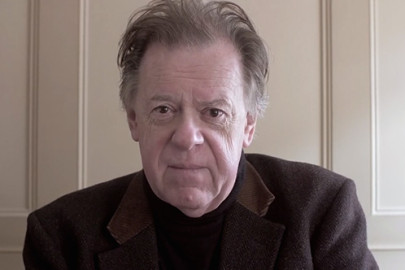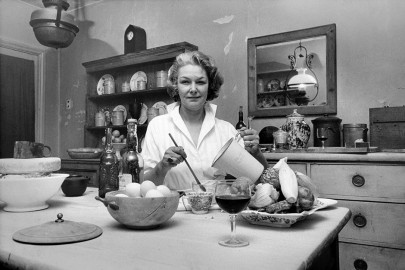I like Hertfordshire. If you don’t know England, this is an understated county of meagre size, found to the north of the London suburbs. Here the urban sprawl gives way to a rolling landscape: golden wheatfields, red-brick shuttered cottage ornées, church spires and tarred clapboard barns. Very Biedermeier. It reminds me in a way of the Belgian countryside around Waterloo; of Benjamin Pollock’s re-imagining of the battlefield for the tuppence coloured sheets of the Victorian Toy Theatre. Or so I so imagine, conveniently forgetting the brave new world of Stevenage and Welwyn Garden City, where the post-war architects reinvented the English market town for the nuclear age, and bowler hatted bureaucrats dabbled in the dark art of social engineering.
It was at Hatfield, sitting beneath the branches of an oak tree in the autumn of 1558, that Elizabeth Tudor first learnt she was Queen of England; the famous oak now felled, a victim of the all-pervasive tyranny of Health and Safety.
Attributed to William Scrotes (fl. 1537-1554), The Princess Elizabeth, circa 1546, Royal Collection, Windsor Castle
We had a relaxed Sunday to kill in Hertfordshire, and decided to try the
Fox and Hounds at Hunsdon for a light and late lunch. It’s about an hour’s drive from the Big Smoke. The Fox and Hounds describes itself on its website as “one of the most romantic restaurants in the South East”. Well.
As a gastropub, The Fox and Hounds is pleasant enough: it’s been Farrow and Balled, with a ubiquitous, slightly anti-septic, re-jigged saloon, now de rigueur of the Home Counties canteen: box framed modern prints, open brickwork, scrubbed tables and a separate “dining room”, leading off a corridor framed with photo-copied reviews by the likes of city sophisticates such as Tom Parker Bowles.
Personally, I miss the days when pubs were pubs; when public bars sported cracked daguerreotypes, worn brasses, dart boards, Landseer engravings, nicotine stained ceilings, dusty oak settles and a sleeping tortoiseshell cat, accompanied with nothing more than the tick-tock of a longcase clock. Where a steak and kidney pie would be served in a ceramic pudding basin.
The Fox and Hounds was more or less empty apart from two pink-skinned, bald headed gentlemen in tight England t-shirts who gave us filthy looks as we dithered over where to sit. Actually, I tell a lie. They weren’t dressed like that, but they could have been, so I trust you’ll get the picture. But this is all beside the point. The food was excellent. Really, utterly lip smackingly good, and the service was charming. Which helps.
I had the “Lamb’s Sweetbreads in a Curried Sauce”. The sweetbreads were perfectly cooked: crisp and caramelised on the outside, soft inside, and served in a piping hot black iron skillet with fresh, slightly undercooked green peas and a creamy, aromatic curry sauce. Mrs Aitch’s “Calf’s Liver Persillade & Duck Fat Potato Cake” was a briliant choice on her part, the liver beautifully cooked, with the parsley and garlic “melting” (her words) over the generous helping of offal beneath.
My plaice was a trifle undercooked for my liking (maybe that’s a personal choice?) but served with lovely crunchy salty samphire. Bread was, presumably, home-made and genuinely delicious. The bar was stocked with interesting local ales from Adnam’s and the Red Squrirrel brewery at Hertford. Service was friendly, welcoming and efficient.
Witchfinder General (1968), Tigon British Film Productions, directed by Michael Reeves
Architecturally, Hunsdon village is slightly enigmatic. I hadn’t realised that the East Anglian vernacular extended so far to the west. The white-painted clapboard cottages, lattice windows, and timber framed houses are more typical of the flat counties of Suffolk and Essex; reminiscent of the locations used in Michael Reeve’s “Witchfinder General”. There’s even a painted village sign over-looking the immaculate Green; the only thing missing is the village pillory.
The Fox and Hounds, Hunsdon, Ware, Hertfordshire, SG12 8NH (01279 843999)
 Photograph: Local_man
Photograph: Local_man









I’m totally with you on the “Farrow and Balled…ubiquitous, slightly anti-septic, re-jigged saloon, now de rigueur of the Home Counties canteen: box framed modern prints, open brickwork, scrubbed tables and a separate “dining room” stuff, its becoming increasingly difficult to find anywhere that hasn’t been naffed up and turned into a footballer’s idea of classy. Every pub in the Cotswolds and Berkshire that I’ve been to lately has had this treatment and it bores the arse off me.
Couldn’t agree with you more. But I wouldn’t be surprised by the Cotswolds. We call it “South Cheshire”. It’s become enormously footballer’w wives. By gad, Jeremy Clarkson lives there (actually Chipping Norton, but it’s close).
The Swan at Swinbrook used to be a good example. This was a lovely old pub I used to visit on a regular basis after fishing. Sleeping cats, ticking clocks, dust, cracked photographs of the local cricket team in the 20’s, steak and kidney pudding in a patty pan. It’s been ruined, and I expect is now turning over a great deal of money. Full of ten year olds in Ralph Lauren cashmere.
The Food at the Fox & Hounds was surprisingly good- really good. If they restored the decor, it would, truly, be the most marvellous find.
Luke, for a taste of the old Cotswolds try the Red Lion near Cirencester. I wrote about it here:
http://gawragbag.blogspot.fr/2009/06/crimson-cat.html?m=1
Good stuff- thanks for the link, just read it. Like Timothy Taylor beer- great packaging too. Has anyone been to any of these pop-up micro brewerys which, according to the press, are now toute le rage? I gather that the gov has relaxed various laws, and it is possible to convert your front room into a mini pub.
Without going as far as calling it a conversion, our front room seemed to morph into a pub/distillery/brewery shortly after we moved in 25 years ago, Luke. It also quadruples-up as a cocktail bar serving an unpretentious dry martini and, c/o a recent visit to Brazil, a satisfying caipirinha. Any time you are in Londres Sud…
I’d be more than delighted to sample any Dry Martini you’ve got on offer. A Naked Martini might be just the ticket, too. I gather you wave the Noilly Pratt bottle over the martini pitcher, rather than adding it to the neat gin. Wasn’t this the tipple of Kingsley Amis?
Stevenage is like the Lambton Worm….
But the woorm it growed an’ growed an’ growed,
An’ growed an aaful size;
He’d geet big heed, a geet big gob,
An’ geet big goggley eyes.
They say that it’s rapidly heading for the coast.
It’s alter ego, Letchworth, built with Quaker money, was kind of almost dry, apart from The Three Shoes and as it sold Greene King was highly avoidable.
My office, at the bottom of Blackhorse road, looked out over farmland, towards Baldock. A Rolls Royce would frequently park opposite and an ancient portly person would sit with the door open and gaze over the fields. One day curiosity had the better of me, I sauntered over and inquired within. Turns out that he was none other than old man Stapleton, Quaker, farmer, founder of Stapletons Tyres, the first independent Tyre fitting company and owner of most of Letchworth. He was riding, or at least parking, his bounds. The Roller was ancient and was a four wheeled ash tray, the old boy, dressed in a fag ash bedecked blue suit complete with clapped out trilby was fascinating, they don’t make ’em anymore.
When he died the executors found in his mansion what was thought to be the largest wine cellar in Hertfordshire, some boy the old man, teetotal? moi?
I’m fascinated by Hertfordshire. It’s a county of contrasts.
I only know bits of Hertfordshire but it seems to be one of those English counties with an identity disorder. The bit I know best is the northwestern bit that panhandles up into the Chilterns around Tring and Berkhamstead — this is pure Bucks really, smooth buttocky hills and the sort of beech woods that make you feel like you’re in a Robin Hood movie. But everything within the M25 is more or less London and everything east of the A1 seems vaguely Essex. And there’s also a very flat, very quiet bit in the far north that gives you a foretaste of the Fens.
Betjeman has some nice lines in his poem ‘Hertfordshire’ but I don’t know which bit he was describing:
Pale corn waves rippling to a shore
The shadowy cliffs of elm between,
Colour-washed cottages reed-thatched
And weather-boarded water mills,
Flint churches, brick and plaster patched,
On mildly undistinguished hills …
E.M. Forster was also a great enthusiast for the county and there’s even been a halfhearted attempt to brand the area north of Stevenage as ‘Forster country’, I believe.
Dear old Betj. He’s spot on with his “pale corn waves rippling to a shore…” Beautifully put. There’s a rather lovely, discreet stretch of Hertfordshire country on the Essex border- relatively close to Stanstead airport. This is very much “mildly undistinguished hills”, golden cornfields rustling in the wind, hunting rectors and red-brick Georgian rectories.
But isn’t there a rather lovely pocket of ersatz “countryside” around Elstree? Very much within the M25 and used as a location for the shenanigans of Steed and Mrs Peel?
P.S. It would be fascinating to hear what Philip W of the excellent English Buildings blog has to say about Hertfordshire. Hope he’s reading this and we can persuade him to comment. I was fascinated to discover all sorts of East Anglian trappings going on there- village signs, clapboard, lattice windows, timber-framing. And this was in a village that, frankly, was almost in the Midlands; a stone’s throw from Luton.
Yes, Jonathan has it right: Hertfordshire has an identity disorder, architecturally at least. In the east, towards the borders with Essex and Cambridgeshire, the vernacular buildings are rather like those in East Anglia – timber frames, plaster, pargetting, white- or pinkwash, thatch, and weatherboarding (aka clapboarding). Sometimes the weatherboarding covers just the lower section, a glorified plinth really, of the outer walls. The western part of the county has more brick buildings, as in north Bucks and Beds, in which counties there are ‘bags’ of clay for brickmaking. There is also flint in the southwest of the county, near the border with Bucks, and this is also used for walling in some places. So Betj was describing different parts of the county in his poem, flint in the SW, colour-wash and reed thatch more in the E.
I don’t know Hertfordshire intimately, so can’t comment on the prevalence of the Farrow and Ball effect there, but it’s certainly widespread in the Cotswolds, where I live (quite some way from Jeremy Clarkson, thank goodness). I’ll check out that Red Lion soon.